
Injuries,
Fundamentally injuries occur when the stress applied to the the tissue exceeds the tissues capabilities (tolerance).
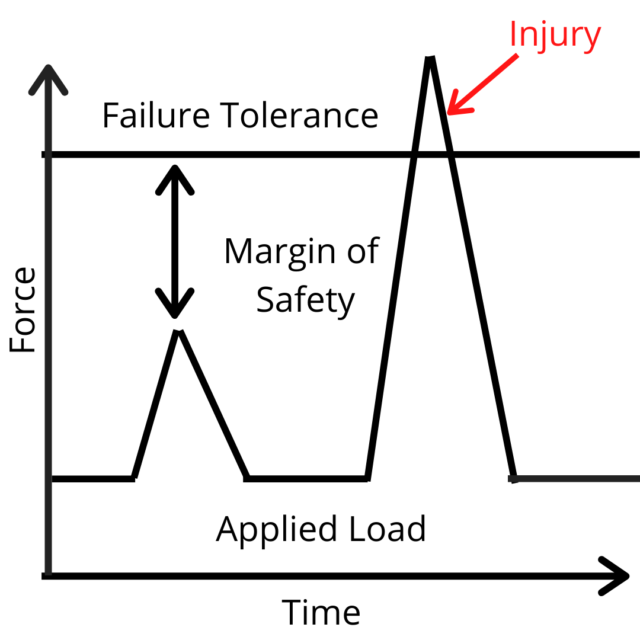
Injuries fall into two categories:
- Chronic: the type that are persistent, either flaring up frequently and resolving only to soon flare up again, or they just kind of linger always there at some level of pain and/ or discomfort.
- Acute: these injuries occur and resolve. While they may occur again, it’s usually separate, distinct, events.
In truth these types of injuries are often interconnected.
Acute Injuries Often Become Chronic.
Why?
We keep doing the same sh@t that’s creating the injury.
Tissue Breakdown > Tissue Recovery
This creates inflammation, disorganized tissue, scar tissue formation and with some long term injuries an actual transition of muscle tissue to non-contractile fibrotic tissue (fibrosis).
This is usually seen in overuse injuries resulting in tendinitis and/ or tendinosis.
It’s RARE(er) that gym injuries are acute rather than chronic.
Keep in mind, I’m not talking about “ouchies”.
Where you tweak something and you can “walk it off”.
We’re talking actual injuries.
Now its true, shit happens and catastrophic events DO occur.
However, catastrophic events seem to be rare and not the cause of what ails you most of the time.
Throwing Snowballs
Last time you got injured you probably spent the rest of the day looking for something you did, or happened to you, to blame your injury on.
Instead of thinking about the injury and all the possible contributors to it holistically.
Someones gotta take the blame, am i right?
As Gray Cook puts it,
“When someone’s back hurts they don’t want to blame their lifestyle, fitness level, or daily patterns. Instead, they want to blame their back pain on starting the lawn mower last week, which, in reality, is probably just the straw that broke the camel’s back. Human beings live under the philosophy of, “I have a snowball and I have to throw it at someone.” No one wants to take responsibility.”- Gray Cook
There’s a good chance that the thing you’re pinning your injury on isn’t necessarily the only thing you should be looking at as contributing towards that injury.
You’re blaming the straw that broke the camels back, the culminating event, of accumulated stressors across that tissue as the only cause of that injury and that’s probably not the case.
YOU’RE NOT THAT FRAGILE
Its just that’s the way we’ve all been taught, and its the easiest way, to think about injuries.
Its a very simplistic X=Y, reductionist, and most often false, way to think about injuries.
“Because the culminating event is falsely presumed to be the cause, prevention efforts are focused on that event. This misdirection of efforts fails to deal with the real cause of the cumulative trauma” – Low Back Disorders
When it comes to training related injuries:
*I’m assuming the exercise technique was correct and there was no pain or discomfort DURING the exercise.
**this in NO WAY is implying that ALL exercises are appropriate for ALL people, ALL of the time.
They’re not.
Some exercises will cause a disproportionate amount of stress or discomfort with some people.
ie if you only feel the elbow JOINT when doing triceps extension exercises….
You probably shouldn’t do those exercises.
Dr. Mike Israetel talks about “Stimulus to Fatigue Ratio” here:
Again, if an exercise is more trouble than it’s worth, ie you get a weeks worth of pain and absolutely no benefit from it.
Stop doing that exercise.
But more than likely a single exercise its not “the thing” that’s creating the injury.
It’s more likely a faulty loading pattern, repeated in close proximity that loads the tissues at a greater rate than they can recover.
For Example:
Your golf swing didn’t injure your back.
Your golf swing, performed for 400 strokes over the course of 3 days injured your back.
Its,
Picking the Scab
You’re probably constantly using movement patterns and loading strategies that are contributing to your pain and you don’t even realize it.
Things like:
- Low back pain being the result of continually initiating movement from the low back (using lumbar flexion or rotation) instead of hip and thoracic spine dominant strategies.
- Neck and shoulder pain being the resultant of emphasizing the use of accessory breathing muscles of the upper back and neck (doing mini shrugs) vs the diaphragm.
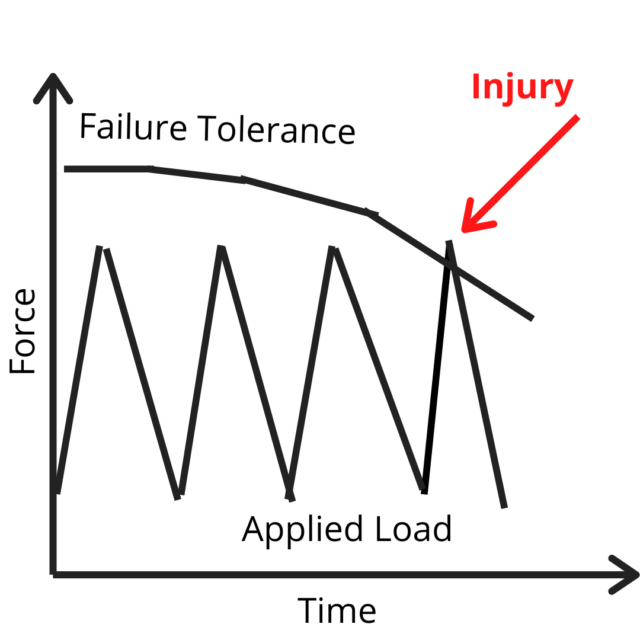
“movement flaws cause repeated or prolonged loading that is abnormal for the tissue, so it slowly becomes painful. Part of the stabilization approach is to correct the aberrant patterns to metaphorically stop picking the scab. As a result the tissues become less sensitized, the repertoire of pain-free tasks increases, and motion returns.” – Low Back Disorders
Injuries as a Bank Account.
The larger your account the more stress/ debits it can handle.
The debits can either be large ones, like buying a new car.
Or they can be small “dings”, like the $5 coffee, the $4 toll, twice a day for a year…
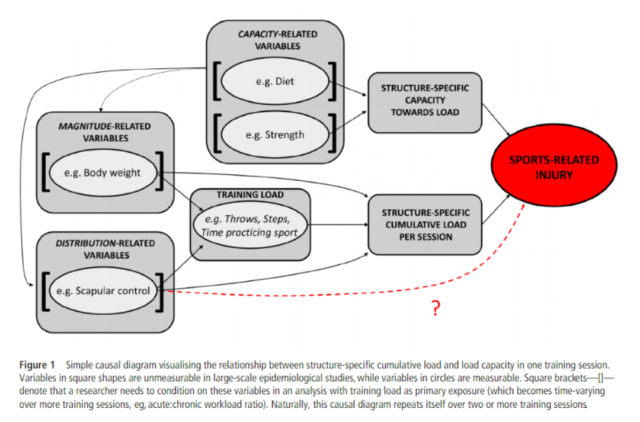
Training load and structure-specific load: Applications for sport injury causality and data analyses
Either way they both draw from the same account,
“As a generalized concept of mechanical failure, failure occurs when the strength of a structure or material is exceeded by excessive stress and strain induced by either the application of a singular high-magnitude stress or alternatively repeated applications of load at some percentage of the material’s ultimate strength.“ –A conceptual model and detailed framework for stress-related,
strain-related, and overuse athletic injury
And given enough debits, large or small (stressors) and not enough credits (recovery), eventually, you’re overdrawn and injured.
Why Bob’s Back Can Look Like a Capital C When he Deadlifts and He’s Never Hurt?
It’s the same reason(s) some pitchers can throw 100mph for 200 innings a year for 10 years and others become Dylan Bundy and Kerry Wood insurance salesmen and real estate brokers with 2 Tommy John surgeries, 3 years after getting to the show.
Different people are dealing with a different set of modifiable and non-modifiable variables that contribute to injuries and you CAN NEVER ACCOUNT FOR ALL VARIABLES
Some of these variables include, but are not limited to:
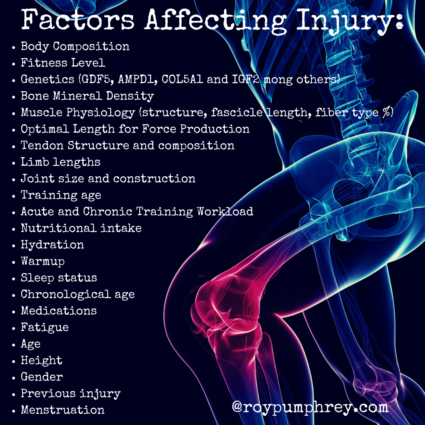
Maybe you eat like sh@t, sleep 3 hours a night, are diabetic, overweight, have a litany of previous back injuries, play 5 rounds of golf a week (with a lot of back involvement per swing and you have smaller, more compressed, facet joints) and have just always generally been injury prone (gene expression).
Where as Bob, sleeps 8 hours a night, eats an excellent diet, has excellent leverages, no real history of injuries, plays one round of golf a week (with almost no back involvement per swing and has very “open”/ mobile facet joints) and has built up to that rounded back snap city deadlift over several years.
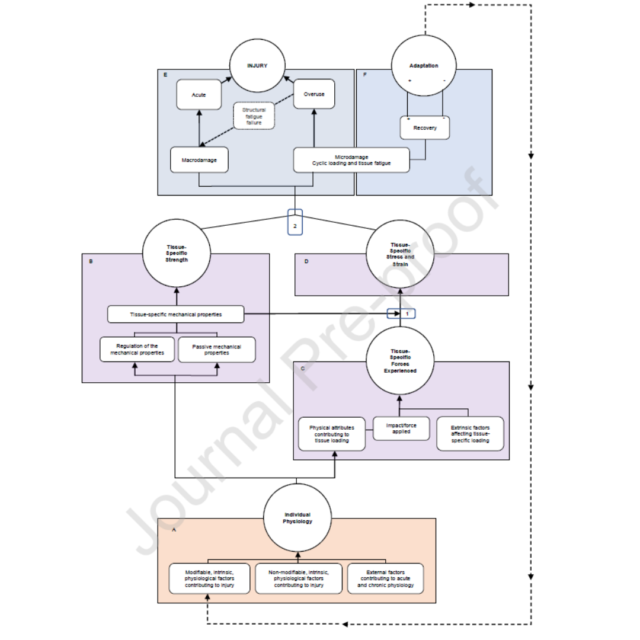
Bob is making one large debit, from a rather large account, he’s constantly replenishing.
Drawing from the account, but never overdrawn.
You’re withdrawing from your, depleted, account, in varying degrees, often.
“Although the quantification of cumulative load may hold value for practitioners and researchers alike, utilization of cumulative load as a surrogate for injury risk is flawed as the relationship between cumulative load and cumulative damage is non-linear, an important concept highly emphasized by Edwards. The cumulative damage that a tissue experiences may vary considerably depending on whether the cyclic loading experienced consists of a smaller number of high magnitude loads (low cycle loading) or a larger number of low magnitude loads (high cycle loading).“- A conceptual model and detailed framework for stress-related, strain-related, and overuse athletic injury
Bob may be approaching his tissue limit each time he does the capital C spine deadlift, and eventually he may surpass his tissue capacity and break.
But for now, his debits haven’t exceeded his available balance and while he is inducing damage on the tissues, he’s not inducing enough damage to create pain.
You really can’t compare two people and what is/ isn’t causative for injuries person to person without knowing all the contributing variables.

What Can You Do to Prevent Injuries?
Control what you can control, right now.
Train Intelligently:
If you’re weak, get strong(er).
Strength is protective.
The stronger you are the smaller each “debit” becomes.
Obviously, the more force tissues can absorb before deformation occurs the more resilient they’ll be to injury.
Louie says it all the time,
Weak. Things. Break.- Louie Simmons
All the literature backs him up,
“dose–response relationship found in our analyses supports the hypothesis that strength improvement and injury prevention are closely related” –Strength training as superior, dose-dependent and safe prevention of acute and overuse sports injuries: a systematic review, qualitative analysis and meta-analysis
Get Strong..
Not only in the injured musculature, but in the supporting musculature.
Endurance:
Often, its not just how strong you are, but how many times you can repeat the effort before deformation occurs.
We’ve seen this with low back pain where endurance of the core musculature is generally more important than core strength.
So, if needed, build endurance, usually isometric endurance in the affected muscles.
Move Better:
Don’t just bend down, spine looking like a C, to tie your shoes or pick something up off the floor.
Make a conscious effort to hinge your hips and maintain a neutral spine.
If every breath you take requires a shoulder shrug to get air in, re-pattern your breathing and allow your neck and shoulders to relax a little.
Find yourself walking on the inside of your shoes, with no arch, ankles collapsing inward?
Rebuild your feet. and actually use them to help create structure for the body.
Every time you do those seemingly little things, not picking the scab, you’re both saving capacity for later and training yourself to default into that new, beneficial, tissue sparing, pattern and not the old, ultimately, injurious one.
Sloppy Inputs = Sloppy Outputs
If you find you’re super stiff or hyper-mobile these can both be problems.
Find where you’re movement competencies are lacking and try to improve them.
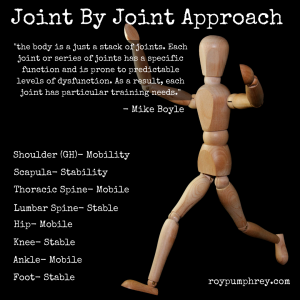
Keep in mind, based on a number of factors you may never have “optimal” movement at a joint, but I’m betting for almost everyone, any deficiency, can be improved upon.
The Training – Injury Prevention Paradox
While training can be an injury prevention strategy too much training (stress) becomes an injury cause.
“Physically hard (and appropriate) training may protect against injuries. There is no disputing that high training loads are generally associated with better developed fitness and thus, good performance. One cost of high training load is often considered to be soft tissue injury risk. To address this risk, training loads could be reduced to decrease the incidence of injury, however low training loads (in the form of reduced t raining volumes) have also been associated with increased injury risk; exposing players to low training loads may place them at risk of further injury.” – The training—injury prevention paradox: should athletes be training smarter and harder?
Like any drug the DOSE must be appropriate,
“the problem is not with training per se, but more likely the inappropriate training that is being prescribed. Excessive and rapid increases in training loads are likely responsible for a large proportion of non-contact, soft-tissue injuries.” – The training—injury prevention paradox: should athletes be training smarter and harder?
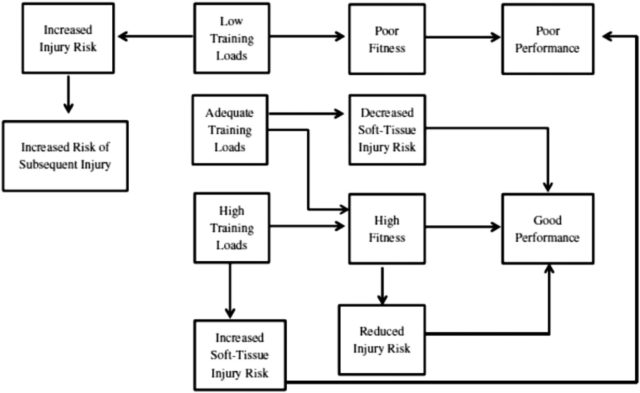
The training—injury prevention paradox: should athletes be training smarter and harder?
“At Some Point Your Recovery Methods MUST be Viewed as a Training Modality- Buddy Morris
If you’re training hard and or often you should start looking at recovery as an active/ integrated part of your training plan.
This means you can’t just go,
“tomorrow is an “off day” from training so, I wont train and regardless of what else I do, I’ll be good in 48 hours”
No thought or plan as to what you’re going to do to to, allow the body to resolve the stress from training and optimize recovery during those intervening 48 hours.
What We’re After is NOT Recovery, But Adaptation
Recovery, is a return to normal, homeostatic, status.
“recovery is defined as the compensation of deficit states of an organism (e.g., failure or decrease in performance and, according to the homeostatic principle, a reestablishment of the initial state.” . Hausswirth and Mujika define recovery as follows: “From a practical perspective, we define recovery as the whole set of processes that result in an athlete’s renewed ability to meet or exceed a previous performance. Further, the recovery period is also defined as the time necessary for various physiological parameters, which were modified by exercise to return to resting values.” – Recovery-Adaptation
If all you ever do is “recover” from your training loads all you’ll ever do is remain the same.
Recovery- Adaptation, and Supercompensation
If the goal of training is to improve, not only must you fully recover, you must have enough the “bank account” to perform at a slightly higher level next time
“Stone et al. expand the concept of recovery beyond repair or refueling and add the idea of growth and supercompensation (i.e., Weigert’s Law). “Recovery is a process of getting back what was lost or simply bringing an athlete’s performance back to where it was. Adaptation deals with the process of long-term adjustment or alterations related to a specific training program. Thus, the coach and athlete cannot simply be satisfied with recovery but must strive to enhance ‘recovery–adaptation.’”. The concept of recovery should be broadened to include recovery and adaptation (RA).”-Recovery-Adaptation
What Does this have to Do With Injuries?
Actively treating recovery as an integral part of your training program allows the body to repair it’s self AND potentially ADD to the stressed systems resulting in a higher functioning level.
Supercompensation = Your Bank Account Just Got Bigger
Here’s the kicker, the best recovery methods known to mankind are totally within reach for everyone.
You don’t need cryogenic chambers, foam rollers, massage therapists or special sports supplements.
*although all of those in the correct dose at the correct time can help.
All you need to do is eat and sleep.
- Hydrate
- Get your protein needs met. (hit 1 g/lbs body weight and you’ll be A-OK)
- Sleep
- Limit alcohol (above 0.5 g/ kg body wgt is a stressor and impairs recovery,) This is especially true of muscle protein synthesis and long term post exercise alcohol consumption could have a real impact on recovery.
- Eat a nutrient dense diet
- Supplement where you fall short (Vit D, Fish Oils, Magnesium, Zinc, Creatine)
Don’t equate a day where you’re sleep deprived, over-stressed at work and eating a craptasitc diet of pizza and beer as a “recovery day” just because you’re not physically training that day.
Its been shown time and again that you CAN NOT completely compartmentalize and separate out stressors.
ALL of life’s stressors matters and draws from your pool of adaptive resources.
No One is Immune From the Stress of Life
“Our study helps to establish a stress-injury relationship for high school football players. The main conclusions that can be drawn from this study include the following: (1) high school football players with high levels of total and negative life stress were more likely to become injured; (2) high school football players with high levels of total and negative life stress were more likely to sustain multiple injuries;” – The Effect of Life Events on Incidence of Injury in High School Football Players
“The major finding of our study is that psychological stress, and not just physical stress, plays an important role in the occurrence of physical injuries for college football players. The data for all athletes in this study showed that the greatest number of injury restriction occurred during times of increased physical stress (i.e., preseason workouts involving frequent and longer duration workouts) as might be expected. However, results also show that academic stress (during regular examination periods) was associated with a significant increase in the numbers of physical injury restrictions, consistent with stress-injury models of health.” –Effect of Physical and Academic Stress on Illness and Injury in Division 1 College Football Players
Be realistic with YOUR lifestyle, totality of stressors, rates of recovery and the amount of workload you’re currently training and what you’ve done in the past.
Different people recover and adapt at different rates.

Keep Injuries at Bay Forever?
That’s not going to happen.
Just too many variables to manage, and they’re all changing, all the time.
But you can mitigate and minimize injuries by:
- Being mindful of how you move and what you do to limit the number of stupid debits on your account through the day.
- Training within your limits, but occasionally pushing towards the outer edge of those limits to force adaptation past your “norm“.
- Plan and respect ACTUAL RECOVERY. If you’re actually training hard, simply not training the day after is NOT enough.
- When you do get injured, be REALISTIC. Was it a catastrophic event or did you slowly bring this on over time?


